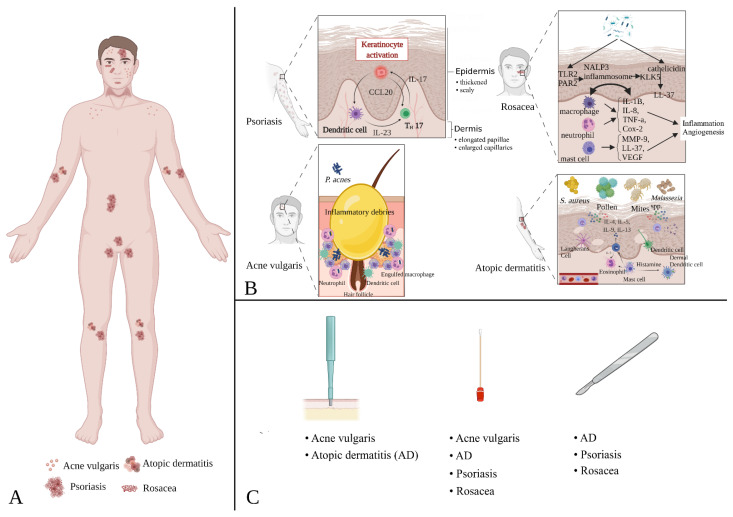Figure 2.
Cutaneous microbiota sampling. (A) presents the most common sampling sites for the diagnosis of four skin diseases. Rosacea is a skin alteration that causes redness and visible blood vessels on the face (nose, forehead, cheeks, and chin). Acne vulgaris affects skin with a high number of sebaceous follicles, particularly the face, neck, chest, back, shoulders, upper arms, and buttocks. Atopic dermatitis most commonly causes red, itchy skin where the skin folds (inside the elbows, behind the knees, and in front of the neck). Psoriasis is an immune-mediated disease that causes inflammation in the body (eyelids, ears, lips, skin folds, hands, feet, and nails). (B) schematically summarizes the molecular pathways surrounding the skin changes described in the main text (where they were voluntarily not explored in depth so as not to lose the focus of the review). Excluding psoriasis (for which we already know the immunological basis), in all other conditions, it is possible to observe cross-talk between cell lines of immunity and products or parts of antigens (both allergens and microorganisms) such as to exacerbate the production of sebum (acne vulgaris) as a direct result of phagocytosis of neutrophils and macrophages, or the production of pro-angiogenic factors (rosacea) that induce the growth of the subcutaneous vascular bed. Finally, (C) summarizes the main sampling methods suitable for obtaining specimens to study the skin microbiota in specific diseases (more details in Section 4).

